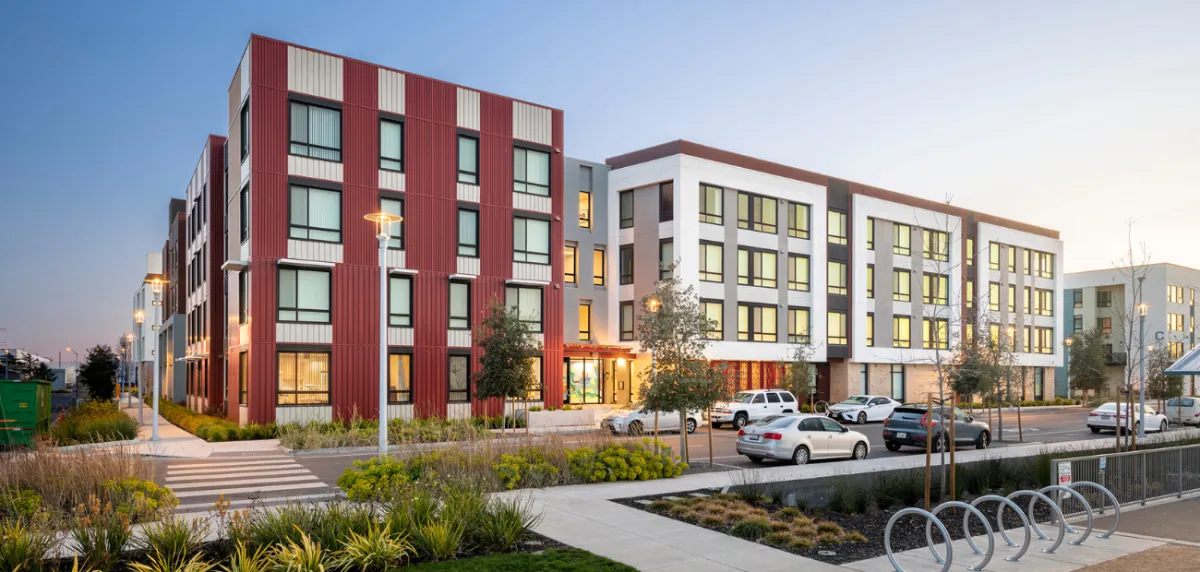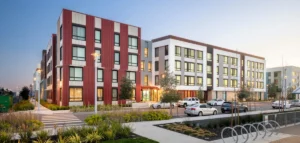
Here are two undeniable truths:
- 1. Commercial real estate has built many investors’ fortunes throughout history, and
- 2. Technology is changing the world at a faster pace than ever.
- But how do those two truths affect one another?There is a reason 80 percent of millionaires attribute their financial success to real estate, much of which focuses in commercial real estate. In past blog articles, I’ve explained in detail how the wealth-building power of commercial real estate works, specifically for multifamily. Due to these articles, I have had many people ask, “Why multifamily? Why not office, retail, or industrial?” All of these options are classified as commercial, and all of them give the benefits I love to write about—but I don’t invest in them. Why?There are a several reasons I don’t invest in those other niches of commercial real estate and focus on multifamily. The one reason I will write about in this article is technology. I don’t think anyone can argue that technology is changing the economy, people’s lives, and the world as a whole faster than it ever has. It happens to be changing things so fast that predicting where it will take us has become more of a crystal ball reading and less of a data analysis.Let’s take look at how technology will affect commercial real estate in the years to come.The success of investment real estate, as with most businesses, can be boiled down to supply and demand. Economics 101, right? We all know this stuff. How badly do your tenants want to rent a property like yours, and how many options do they have to choose from? Well, technology is taking supply and demand for the commercial real estate niches and shaking things up.Let’s look at few undeniable truths technology has given us and what they mean for commercial real estate.
4 Ways Technology is Shaking Up Commercial Real Estate
1. Demand for workspace is shrinking as people work from home more than ever.
Technology has made it easier to work from home than ever, with tools like Think Email, Skype, Go to Meeting, Podio, and others facilitating virtual collaboration.
According to a Gallup survey of 15,000 adults released last year, 43 percent of employed Americans spend at least some time working remotely. The survey also reported those working remotely four to five days a week grew by nearly the same amount, rising to 31 percent from 24 percent.
Related: 4 Ways New Technology is Changing How Real Estate Investors Communicate
The reason we see this swing is because working from home causes employee satisfaction and productivity to go up and employer costs to go down. Many surveys show employees are willing to forgo 15-20 percent in compensation for the flexibility and convenience of working from home.
Combine all this with that fact that the growing tech industry leads the pack in allowing employees to work from home, and it appears that the trend is likely to pick up pace in coming years.
This all results in a steady trend of more and more employees working from home. Because of this, the demand for office space will continue to decrease as less is needed to accommodate this new trend. I am not saying office space will disappear, but demand will go down, and when demand falls, both pricing and valuation of the asset will fall.
2. Demand for retail space is shrinking as people shop online more than ever.
Ten years ago, if someone told you that you could order your groceries online and have them at your doorstep one hour later or that Amazon would be delivering packages to your doorstep with a drone, you would have thought it was crazy talk.
Today, eight in 10 Americans shop online, according to a new study from Pew Research. That’s 79 percent of U.S. consumers. Leading the pack in online retailers in recent years, Amazon has made a major impact on how we purchase everything from groceries to lawn mowers. Amazon sells just about everything you can think of.
Other major companies, like Wayfair, follow behind Amazon. Even Walmart has made huge push to online shopping recently.
I believe of all the undeniable truths that this is the one that will change commercial real estate the most. Brick and mortar real estate serving retail is and will continue to be replaced by massive fulfillment centers out in the middle of nowhere. Again, to be clear, I am not saying all strip centers in the world will be boarded up and no longer used, but with such a massive push towards online buying and the savings that gives to companies, I have no doubt that demand for this asset class will decline due to this change in technology.
3. Demand for commercial real estate will be displaced because it is simpler for businesses to source from overseas.
I mentioned how technology continues to improve communications and purchasing. Those two things also open the door for businesses to conduct their business overseas to achieve the most competitive pricing. Now even the smallest of businesses can quickly and easily source manufacturing or simple purchasing from overseas vendors.
The most rapid changes I see that technology has opened up for businesses is the ability to not only order things overseas but also hire people to work virtually. Now with a few clicks and calls, a small business owner can hire someone in India, the Philippines, or anywhere else in the world. The Intelligent Virtual Assistant Market is expected to rise from $627.7M in 2015 to a massive $7.9B by 2024. The market is forecasted to expand at an astounding 32.8% CAGR. As this trend grows, it pushes the need for types of real estate that service these jobs out of the country. For the most part, this means industrial spaces for manufacturing and offices will be displaced to serve virtual assistants.

-
4. Demand for multifamily will increase as people change jobs/careers at a faster pace than ever.
With the world changing so quickly, people are changing as well. The Millennial generation is known to job hop, creating transient employees. They bounce around the country and stay in jobs for a significantly shorter period of time than previous generations. The data supports this. A recent Gallup report on the Millennial generation reveals that 21 percent of Millennials say they’ve changed jobs within the past year, which is more than three times the number of non-Millennials. Jobs and net migration of population are changing, and the younger generation is adapting to that. I believe these changes are being driven by technology.
Related: 5 Ways the Real Estate Industry Will Completely Transform Over the Next Decade
Fifty years ago, if you lived in Ohio, there was no good way for you to hear about job opportunities in Texas. Even if you did somehow find out about them, you would have to pay a fortune for long distance phone calls, and you’d have to send in your resume via snail mail and hope to hear back. If by some good luck you did get the job, you would be forced to move to a new state and say goodbye to your family. Now we can jump on the computer and search for the best fitting/paying opportunities all over the country, apply for them, and interview with them, all without ever leaving our home state. If the need to move out of state arises, we can simply text, FaceTime, or Skype to stay in touch with friends. Put simply, moving jobs and transient lifestyles just aren’t as unachievable as they used to be, which has lead to an increase in this way of living.
This lifestyle results in decreased demand for home ownership. Today, only 63 percent of people own homes, a 50-year low. Some of this is a result of affordability, and some of it is a result of lifestyle. Regardless, people are renting more and more. This increases demand for residential rental property, specifically multifamily.
The undeniable truth is that people work from home now more than ever, and that continues to climb. More people shop from home, and that continues to climb. And more than ever people don’t want to or cannot afford to own the very home they are working and shopping from. The demand for the commercial real estate asset classes are being shaken by change, and that change is a result of technology.
- Source: BiggerPockets.com












